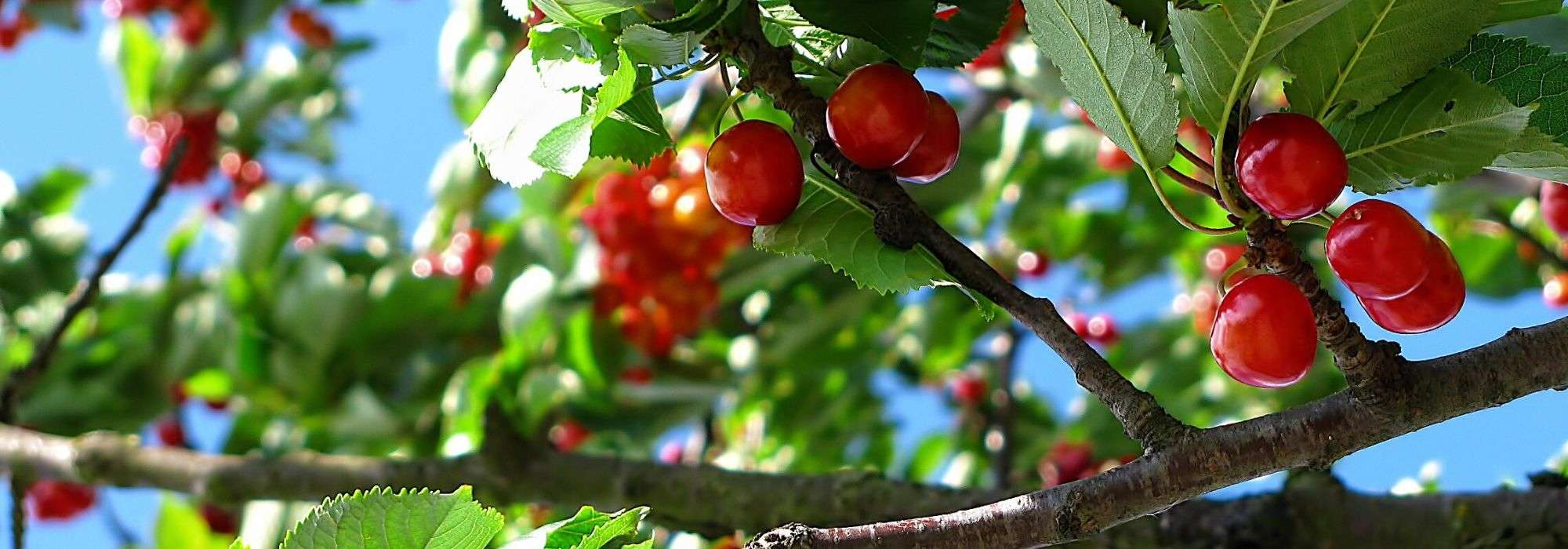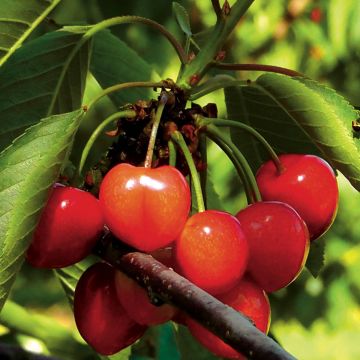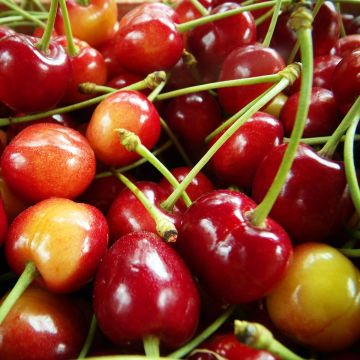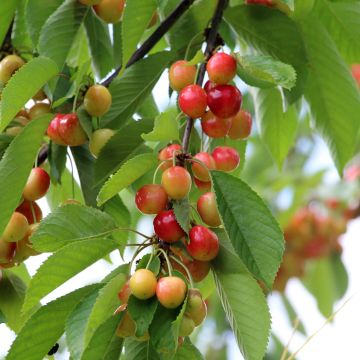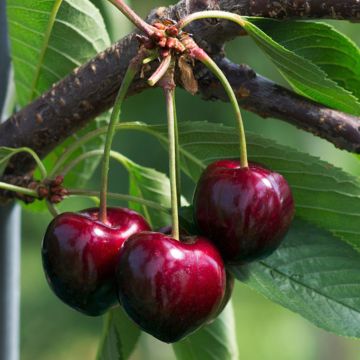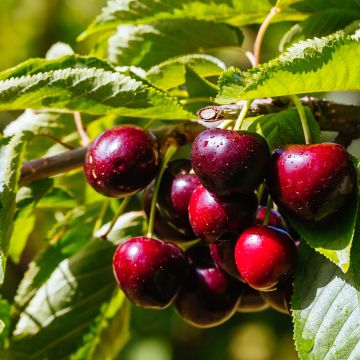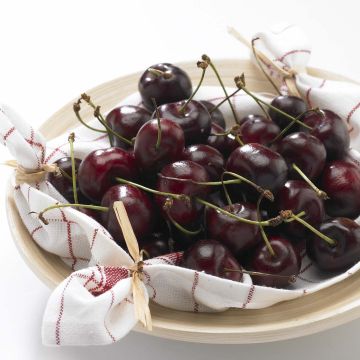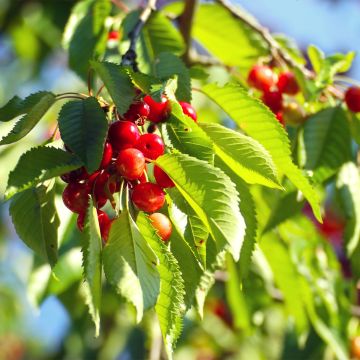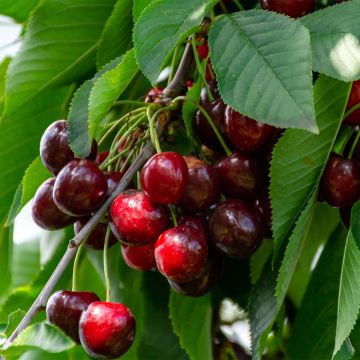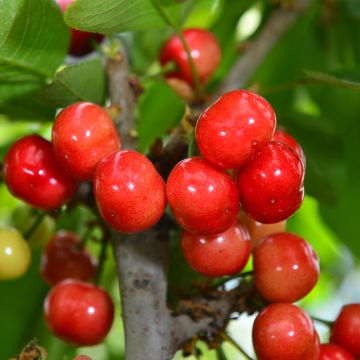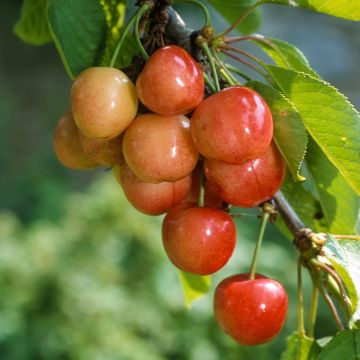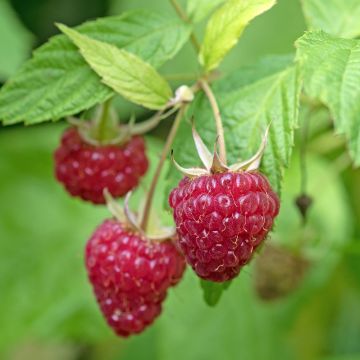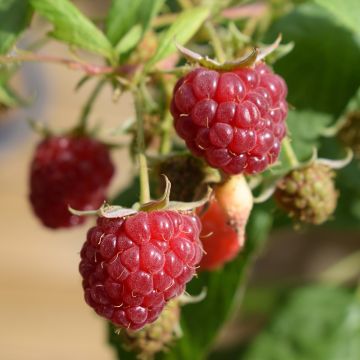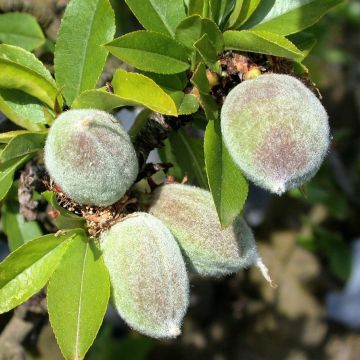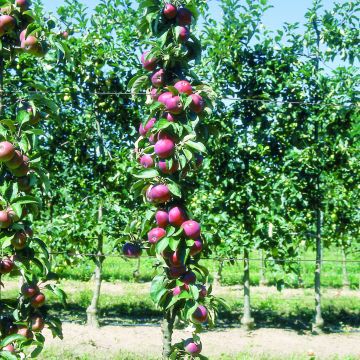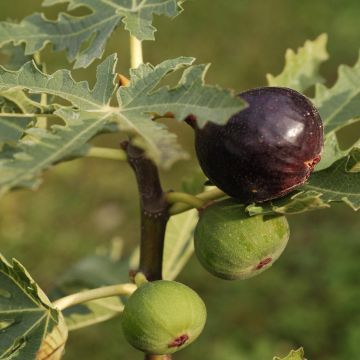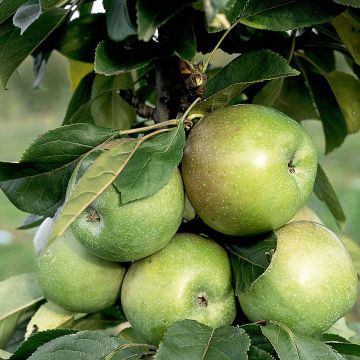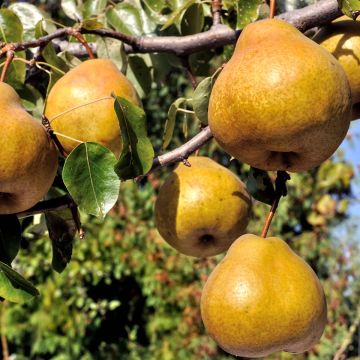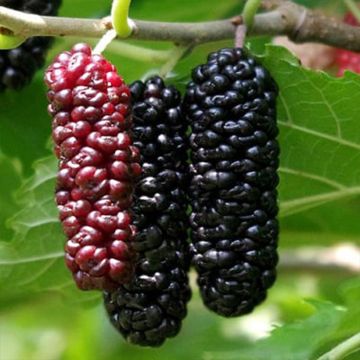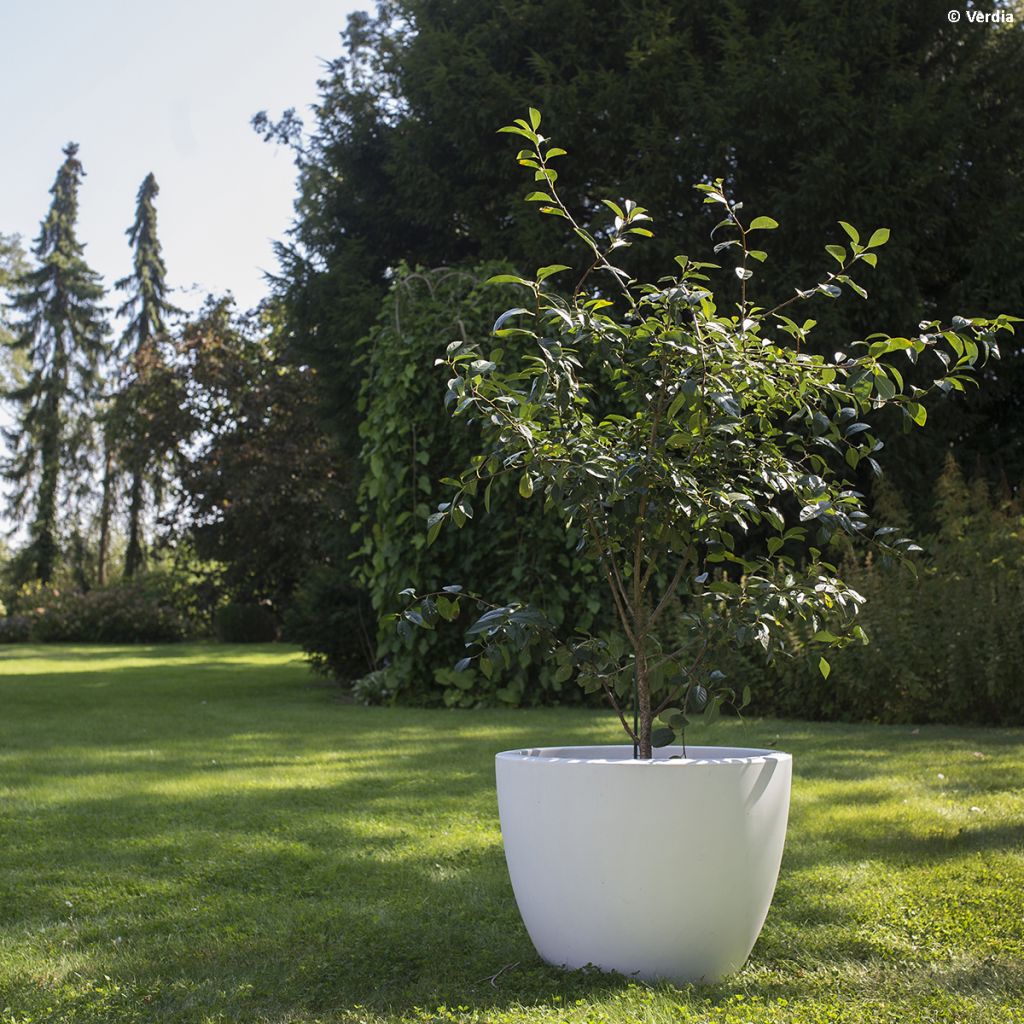

Prunus Cherry Baby - Dwarf Cherry
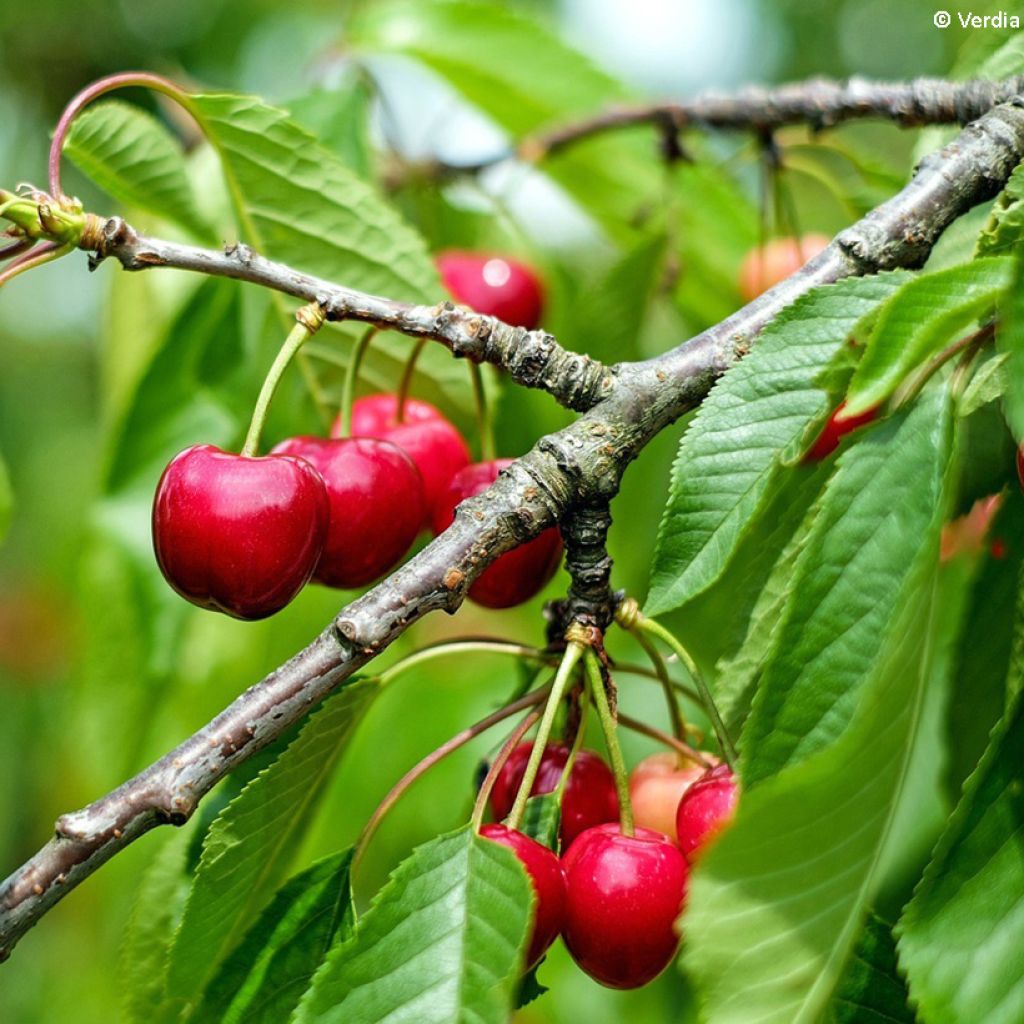

Prunus Cherry Baby - Dwarf Cherry
Prunus Cherry Baby - Dwarf Cherry
Prunus cerasus Fruitality® Cherry Baby® (‘Porthos’)
Dwarf Cherry
Received in good condition, it seemed perfect for my garden with its well-pruned size. Planted immediately upon arrival. In spring, a branch with 5 leaves gave me hope that it was alive. Now it appears completely dried out and lifeless despite my care...
Natacha, 02/07/2025
Special offer!
Receive a €20 voucher for any order over €90 (excluding delivery costs, credit notes, and plastic-free options)!
1- Add your favorite plants to your cart.
2- Once you have reached €90, confirm your order (you can even choose the delivery date!).
3- As soon as your order is shipped, you will receive an email containing your voucher code, valid for 3 months (90 days).
Your voucher is unique and can only be used once, for any order with a minimum value of €20, excluding delivery costs.
Can be combined with other current offers, non-divisible and non-refundable.
Home or relay delivery (depending on size and destination)
Schedule delivery date,
and select date in basket
This plant carries a 6 months recovery warranty
More information
We guarantee the quality of our plants for a full growing cycle, and will replace at our expense any plant that fails to recover under normal climatic and planting conditions.
Description
The Dwarf Cherry tree Cherry Baby is characterized by its dwarf and compact habit, its sparkling spring flowering, and its high productivity. Quick to fruit, from the second year of planting, it offers a harvest of beautiful medium-sized, round cherries, 2 to 2.5 cm (0.8 to 1 in) in diameter, slightly flattened at both ends. Its bright red, shiny skin encloses a dark red, fairly firm, moderately juicy and sweet flesh, with a slight acidity. This mini cherry tree is hardy (down to -20°C), resistant to diseases, requires no pruning, is easy to grow and almost maintenance-free. Self-fertile, it can pollinate itself. In the garden, this variety easily integrates into an edible or ecological hedge, in an orchard, in association with other fruit trees, or as a solitary tree on the lawn.
Prunus cerasus, more commonly known as the Common Cherry tree, belongs to the Rosaceae family. It is native to Europe, Western Asia, and North Africa, and has been present in Europe since the Neolithic period.
The Cherry Baby variety (‘Porthos’) is the result of the cross-breeding between the 'Kerr's Easy Pick' and 'Cacanski Rubin' varieties, obtained by Robert H. Bors in 1999, in Canada, at the University of Saskatchewan in Saskatoon. It is part of a very innovative selection of fruit plants, recently introduced under the FRUITALITY ® brand. It forms a semi-erect bush that can reach 2m (78.7 in) in height and 120 cm (47.2 in) in width. Its deciduous foliage is composed of leaves 5 to 6 cm (2 to 2.4 in) long, alternate, obovate, shiny dark green turning orange-brown in autumn. The semi-late flowering occurs between late March and mid-April, before the appearance of leaves, which can leave it exposed to late spring frosts. The pure white, single flowers, 1.5 to 2.5 cm (0.6 to 1 in) in diameter, are grouped in clusters. They can be destroyed by frost from -2 to -3°C (28.4 to 26.6°F), so it is recommended to plant cherry trees in a sheltered position, facing west and protected from cold winds in regions that experience late frosts. However, the very abundant flowering often results in satisfactory fruiting. It has remarkably decorative flowering in spring, particularly nectar-rich. This hardy tree, which can withstand temperatures around -20°C (-4°F), is suitable for cultivation in all regions. It is said to be self-fertile, the flowers can self-pollinate, it does not therefore need a companion to bear fruit, but the presence of another variety of cherry tree nearby will increase production.
The Cherry Baby tree is a very productive variety, with quick fruiting from around 2 to 3 years, becoming optimal after 5 to 6 years. The abundant, uniform harvest(about 10 to 20 kg of fruit per year) is not very sensitive to alternate bearing, thus offering a regular production each year. The fruit is attached to the branch by a relatively short petiole, 3 to 4 cm (1.2 to 1.6 in) long. The harvest starts around mid-June and extends until mid-July. It is important to pick the fruits only when they are ripe, as they do not ripen further, and with their stems to ensure good storage. Cherries are quite fragile and should be harvested carefully.
Quite juicy and firm, this cherry with sweet and tangy flavours is delicious to eat raw. In cooking, it reveals all its flavours in the preparation of clafoutis, cakes, crumbles or pies, fruit salads, and as an accompaniment to savoury dishes based on white meats (turkey, chicken, veal, duck, etc.). They are also perfect for making jams, syruped fruits, and preserves. Vitamins A, C, and E, phenolic antioxidants, calcium, and copper, with a significant contribution of iron, richness in trace elements and fibres, make cherries a health asset. The fruits can only be stored for a few days in a cool place or in the refrigerator. They can also be frozen once washed, dried, stemmed, and pitted.
Very popular, thanks to its fruits, the cherry tree finds its rightful place in the garden for the pleasure of young and old. Among a very wide range of cherry trees, it is easy to find the variety that best suits one's desires or needs. This Mini cherry tree, Cherry Baby, like the fruit trees in the FRUITALITY ® range (for example: the Goji berry Gojidelys or the Dwarf Fig tree Figality), is also easy to grow, hardy, reliable, and not very susceptible to diseases, while allowing the creation of a fruit selection suitable for small gardens or limited spaces.
Prunus Cherry Baby - Dwarf Cherry in pictures
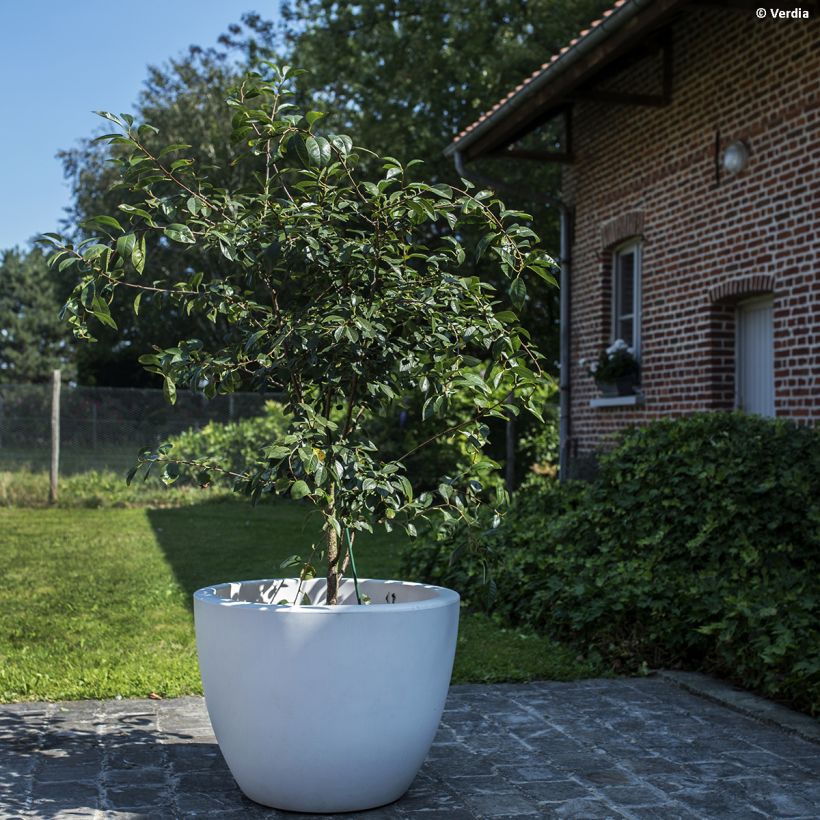

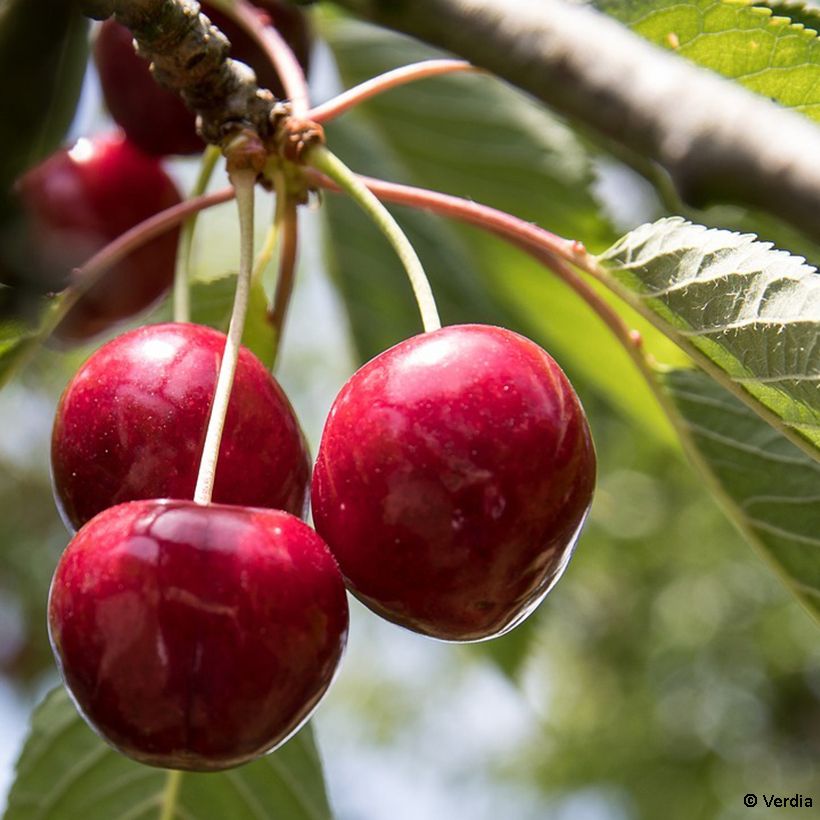

Plant habit
Fruit
Flowering
Foliage
Botanical data
Prunus
cerasus
Fruitality® Cherry Baby® (‘Porthos’)
Rosaceae
Dwarf Cherry
Cultivar or hybrid
Other Cherry trees
View all →Planting and care
Easy to grow, the Cherry Baby Cherry Tree grows in any type of soil, slightly acidic or slightly chalky. It likes moist, light soils and dislikes heavy and clayey soils. Choose a sunny exposure. In order to limit the risks of late frost on the flowers, plant the Cherry Tree in a sheltered position, facing west and protected from cold winds in regions that experience spring frost. Planting is best done in autumn or alternatively in winter, outside the freezing period. If you plant several trees, space them 2 to 3 metres (6 feet 7 inches to 9 feet 10 inches) apart for dwarf varieties.
Loosen the soil deeply, and remove stones and unwanted weeds. Add some sand to improve drainage. Dig a hole 4 to 5 times the volume of the root ball. Make sure to separate the subsoil from the topsoil. Mix bonemeal or well-rotted compost or potting soil with the subsoil and pour this mixture into the planting hole. Install a stake. Place the root ball, cover with the topsoil and pack it well. Water abundantly (about 10 litres). Position your tie system, crossing it in the shape of 8, so that the trunk and the stake do not rub against each other.
Watering is not necessary except in case of high temperatures. Mulch at the base to keep it moist in summer. Protect your harvest by installing a bird net or scarer.
For pot planting: install a layer of gravel or clay balls at the bottom of the pot to facilitate drainage. Add a layer of soil and then place the plant and cover it with a mixture of 2/3 garden soil, 1/3 multi-purpose compost or well-rotted compost. Every spring, remove the top layer and replace it with fresh compost. Water regularly and moderately. At the end of autumn, protect the pot with insulation before winter frost.
The cherry tree can be subject to various diseases and pests. Against grey rot (velvety rot on fruits) and moniliosis (drying of flowers and rotting of fruits on the tree), as a curative measure, remove and burn the affected parts and as a preventive measure, spray Bordeaux mixture or decoctions of horsetail or garlic in early spring and autumn. Against bacterial canker (drying of floral bouquets, brown spots, bark deformation), spray Bordeaux mixture. As for pests, the cherry fly or fruit worm can be controlled preventively by installing yellow cardboard discs covered with glue in spring, or pheromone traps (trapping males), or a Drosophila trap, which is easy to make from a plastic bottle. In case of black aphid attack, spray a mixture of water and soap or water and vegetable oil.
Planting period
Intended location
Care
Planting & care advice
-
, onOrder confirmed
Reply from on Promesse de fleurs
Similar products
Haven't found what you were looking for?
Hardiness is the lowest winter temperature a plant can endure without suffering serious damage or even dying. However, hardiness is affected by location (a sheltered area, such as a patio), protection (winter cover) and soil type (hardiness is improved by well-drained soil).

Photo Sharing Terms & Conditions
In order to encourage gardeners to interact and share their experiences, Promesse de fleurs offers various media enabling content to be uploaded onto its Site - in particular via the ‘Photo sharing’ module.
The User agrees to refrain from:
- Posting any content that is illegal, prejudicial, insulting, racist, inciteful to hatred, revisionist, contrary to public decency, that infringes on privacy or on the privacy rights of third parties, in particular the publicity rights of persons and goods, intellectual property rights, or the right to privacy.
- Submitting content on behalf of a third party;
- Impersonate the identity of a third party and/or publish any personal information about a third party;
In general, the User undertakes to refrain from any unethical behaviour.
All Content (in particular text, comments, files, images, photos, videos, creative works, etc.), which may be subject to property or intellectual property rights, image or other private rights, shall remain the property of the User, subject to the limited rights granted by the terms of the licence granted by Promesse de fleurs as stated below. Users are at liberty to publish or not to publish such Content on the Site, notably via the ‘Photo Sharing’ facility, and accept that this Content shall be made public and freely accessible, notably on the Internet.
Users further acknowledge, undertake to have ,and guarantee that they hold all necessary rights and permissions to publish such material on the Site, in particular with regard to the legislation in force pertaining to any privacy, property, intellectual property, image, or contractual rights, or rights of any other nature. By publishing such Content on the Site, Users acknowledge accepting full liability as publishers of the Content within the meaning of the law, and grant Promesse de fleurs, free of charge, an inclusive, worldwide licence for the said Content for the entire duration of its publication, including all reproduction, representation, up/downloading, displaying, performing, transmission, and storage rights.
Users also grant permission for their name to be linked to the Content and accept that this link may not always be made available.
By engaging in posting material, Users consent to their Content becoming automatically accessible on the Internet, in particular on other sites and/or blogs and/or web pages of the Promesse de fleurs site, including in particular social pages and the Promesse de fleurs catalogue.
Users may secure the removal of entrusted content free of charge by issuing a simple request via our contact form.
The flowering period indicated on our website applies to countries and regions located in USDA zone 8 (France, the United Kingdom, Ireland, the Netherlands, etc.)
It will vary according to where you live:
- In zones 9 to 10 (Italy, Spain, Greece, etc.), flowering will occur about 2 to 4 weeks earlier.
- In zones 6 to 7 (Germany, Poland, Slovenia, and lower mountainous regions), flowering will be delayed by 2 to 3 weeks.
- In zone 5 (Central Europe, Scandinavia), blooming will be delayed by 3 to 5 weeks.
In temperate climates, pruning of spring-flowering shrubs (forsythia, spireas, etc.) should be done just after flowering.
Pruning of summer-flowering shrubs (Indian Lilac, Perovskia, etc.) can be done in winter or spring.
In cold regions as well as with frost-sensitive plants, avoid pruning too early when severe frosts may still occur.
The planting period indicated on our website applies to countries and regions located in USDA zone 8 (France, United Kingdom, Ireland, Netherlands).
It will vary according to where you live:
- In Mediterranean zones (Marseille, Madrid, Milan, etc.), autumn and winter are the best planting periods.
- In continental zones (Strasbourg, Munich, Vienna, etc.), delay planting by 2 to 3 weeks in spring and bring it forward by 2 to 4 weeks in autumn.
- In mountainous regions (the Alps, Pyrenees, Carpathians, etc.), it is best to plant in late spring (May-June) or late summer (August-September).
The harvesting period indicated on our website applies to countries and regions in USDA zone 8 (France, England, Ireland, the Netherlands).
In colder areas (Scandinavia, Poland, Austria...) fruit and vegetable harvests are likely to be delayed by 3-4 weeks.
In warmer areas (Italy, Spain, Greece, etc.), harvesting will probably take place earlier, depending on weather conditions.
The sowing periods indicated on our website apply to countries and regions within USDA Zone 8 (France, UK, Ireland, Netherlands).
In colder areas (Scandinavia, Poland, Austria...), delay any outdoor sowing by 3-4 weeks, or sow under glass.
In warmer climes (Italy, Spain, Greece, etc.), bring outdoor sowing forward by a few weeks.






























